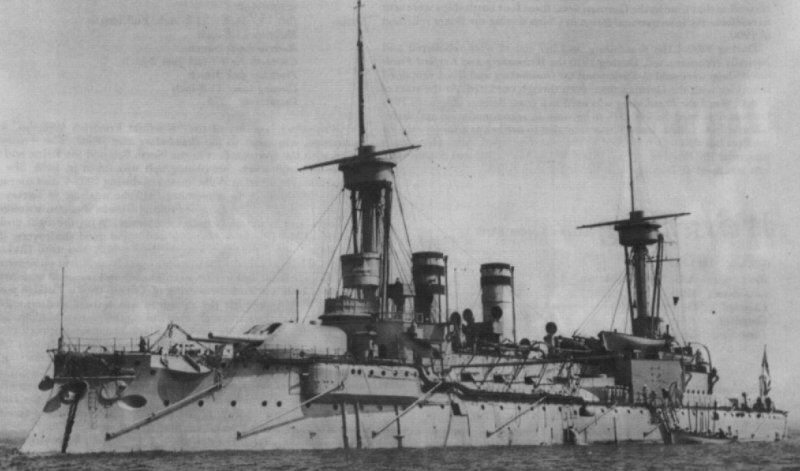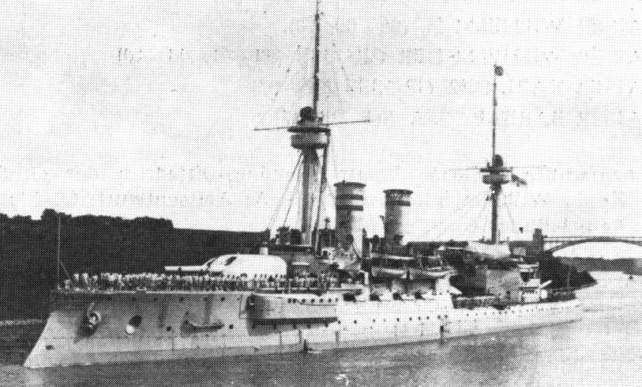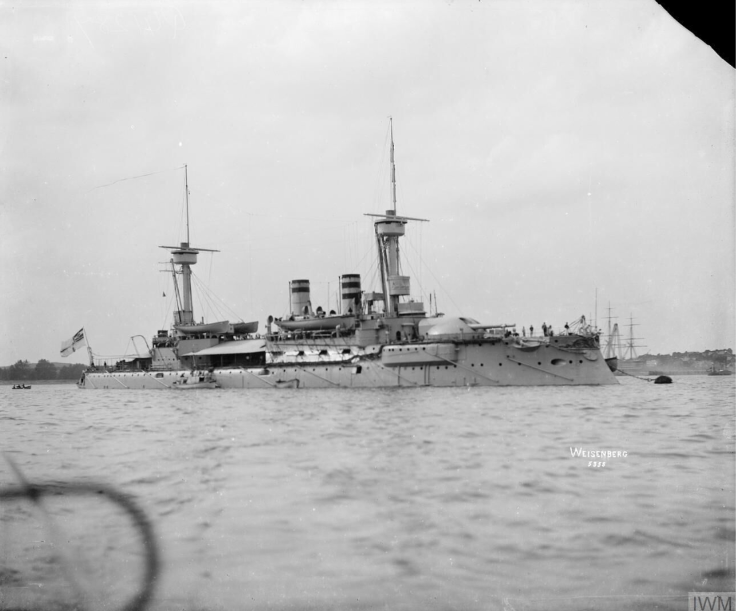German Pre-Dreadnought Battleship SMS Weissenburg
SMS Weissenburg was one of four Brandenburg-class pre-dreadnought battleships constructed for the Imperial German Navy in the early 1890s. As part of Germany’s first generation of true seagoing battleships, Weissenburg symbolized the country’s growing naval ambitions and marked a turning point in its maritime strategy. Though she would later be overshadowed by more modern warships, Weissenburg served with distinction during her years in the German fleet before being sold to the Ottoman Empire, where she had an extended second career under the name Turgut Reis.
Laid down in 1890 and launched in December 1891 at the Germaniawerft shipyard in Kiel, Weissenburg was commissioned into the German fleet in October 1894. At the time of her entry into service, she was among the most powerful battleships in the world, thanks to an unusually heavy main armament for a ship of her size. Like her sister ships (Brandenburg, Kurfürst Friedrich Wilhelm, and Wörth), she displaced approximately 10,000 tons fully loaded and was powered by two triple-expansion steam engines that allowed her to reach speeds of around 16.5 knots.
Her armament layout was distinctive. She carried six 28 cm (11-inch) guns mounted in three twin turrets — one forward, one aft, and one amidships — which was unusual for battleships of the time and provided a potent broadside. This triple-turret configuration came with challenges in internal space and stability but gave her superior firepower compared to many foreign contemporaries. Her secondary battery comprised eight 10.5 cm guns, supported by smaller quick-firing weapons and torpedo tubes. Armor protection was heavy, especially over the central citadel, with belt armour up to 400 mm thick, as well as strong deck and turret armour, making her well-defended by the standards of the 1890s.
During her early career, Weissenburg served in the I Squadron of the German High Seas Fleet, participating in training cruises, fleet exercises, and ceremonial events. In 1900, she took part in one of Germany’s earliest overseas naval deployments, joining an expeditionary force sent to China to suppress the Boxer Rebellion. Along with her sister ships, she formed part of the East Asia Squadron and represented Germany’s growing interest in global naval affairs. The deployment demonstrated Germany’s willingness to project power abroad and marked an early example of gunboat diplomacy.
After her return to Germany, Weissenburg resumed her peacetime duties, but as newer classes of battleships entered service, she gradually fell behind in capability. Unlike some of her sister ships, however, Weissenburg did not remain in the fleet for long. In 1910, the German Navy sold her and her sister Kurfürst Friedrich Wilhelm to the Ottoman Empire, where they were renamed Turgut Reis and Barbaros Hayreddin respectively. This sale not only reflected the obsolescence of the Brandenburg-class in an era increasingly dominated by dreadnoughts, but it also strengthened the Ottoman Navy at a time of rising tensions in the Balkans.
As Turgut Reis, the former Weissenburg served the Ottoman Empire for many years, taking part in the Italo-Turkish War (1911–1912) and the Balkan Wars (1912–1913), where she saw action against Greek and Balkan forces. During World War I, she remained in service with the Ottoman fleet, though her age limited her to secondary roles such as coastal defense and training. Nonetheless, her presence, along with that of her sister ship, provided a significant morale and prestige boost for the Ottoman Navy.
Following the end of the First World War, Turgut Reis continued to serve in a reduced capacity under the Turkish Republic. She was used for training cadets and remained afloat well into the 1930s, even undergoing partial modernization. Eventually, however, she was decommissioned and finally scrapped between 1953 and 1957 — a remarkably long lifespan for a battleship of her generation.



